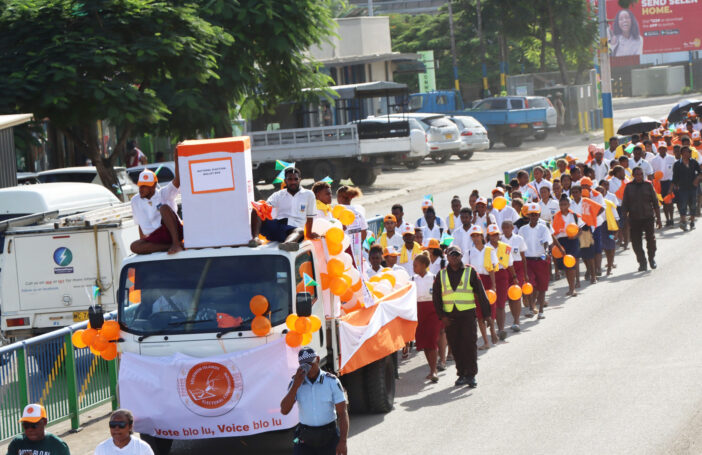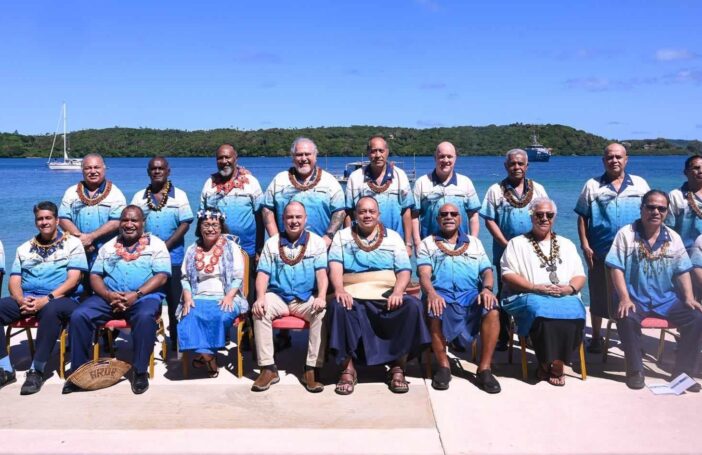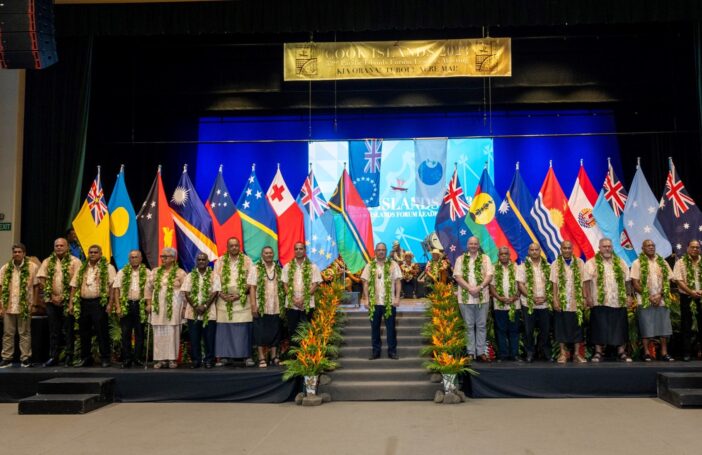Police motorcades, close personal protection for VIPs and Solomon Islands police with assault rifles in military uniform cosplay milling around venues spoke of a very un-“Pacific way” at this year’s Pacific Islands Forum Leaders Meeting (PIFLM) in Honiara. Every PIF is different and most noticeable this year was the high level of security around leaders in contrast to the limited police presence on the streets of the capital.
Leaders and delegates alike were blown away by the display of Solomon Islands culture, especially during the ceremony. A carefully curated program brought to life the diversity of the country by way of music, dance and the presentation of gifts to the Secretary-General, who received them on behalf of the leaders.
Much has been made of the fact that dialogue partners and observers were asked to stay away from this year’s meeting. The media contingent numbered around 150, making it the largest delegation to take part. Access to leaders was significantly reduced compared to recent meetings, including last year’s in Tonga. That, combined with last minute changes to the program, made for some heightened levels of frustration in the media centre.
However, it was a press conference held by the Australian prime minister that proved the lightning rod for anger on the part of Pacific journalists and media organisations, who were excluded by Australian officials.
The actions of the Australian officials were condemned. “You cannot claim to be part of the Pacific family while silencing Pacific voices. You cannot talk about partnership while blocking our journalists from doing their jobs,” said the chair of the Pacific Freedom Forum, Robert Iroga, who is from Solomon Islands. Elsewhere it was described as casting “a pall over the image of democratic beneficence Australia wishes to project”.
Unlike last year, the communique was not subject to post-publication changes. However, the wording came after a lengthy and fraught discussion. Once again, it was the status of Taiwan as a “development partner” that proved a major sticking point.
Section 25 of the communiqué is as clear as it could be. It refers to the now endorsed Leaders Policy on Partnerships and confirms that it applies only to Forum Dialogue Partners and Forum Observers “and that it maintains the 1992 Leaders’ decision on Development Partners”.
Finalising a 10-year project, Pacific leaders signed their first treaty in decades, to establish the Pacific Resilience Facility (PRF). In a tearful address, its head Finua Soqo hailed the signing as a landmark moment for the region to control how climate adaptation funding is spent. Australia is so far the biggest donor, with A$100 million promised. However, the facility’s half-billion dollar funding target is far from being achieved, and signatures are still required to ratify and activate the treaty. Without dialogue partners at this PIFLM, there was no opportunity to lobby them to tip into the fund.
Another major achievement for this leaders’ meeting was the endorsement of the Blue Pacific Ocean of Peace Declaration. This initiative dates back to 2023 when it was first proposed by Prime Minister Rabuka of Fiji and it is seen by many as a personal legacy project of his. It is a wide-ranging document that covers everything from “preserving the region from acts that undermine peace, including the proliferation of nuclear weapons” to “the need to protect Pacific peoples, including future generations, from the escalating impacts of climate change”.
However, on the sidelines of the meeting, civil society actors and activists raised significant questions about what an Ocean of Peace really means. They pointed to increased militarisation in the region, and argued that peace is more than an absence of war. Their concerns were linked to an ongoing and increased push for self-determination in the Pacific across Kanaky (New Caledonia), Ma’ohi Nui (French Polynesia), Hawai’i and West Papua (the Papuan provinces of Indonesia).
A security agreement was signed in the Pacific during the week but not the one that was the focus of much of the media coverage. The leaders of Fiji and Solomon Islands inked an agreement that goes beyond what the long-standing regional Biketawa Agreement provides. Ironically, it was another security agreement, or ultimately the lack thereof, that once again saw the late arrival of the leader of the region’s biggest aid donor. Despite the release of the PIFLM dates in February, Australian prime minister Anthony Albanese chose to make a detour to Vanuatu en route to the leaders’ meeting with the intention of securing a bilateral security deal known as the Nakamal Agreement. He failed but, by doing so, also delayed the arrival of Vanuatu’s prime minister Napat in Honiara.
It is clear that much of the leaders’ time and energy was taken up with discussions on the Review of Regional Architecture, in particular the approach to current and prospective dialogue partners.
This is becoming a drag on regional energy, which is hard to maintain at the best of times.
Speaking to the media at the end of the week, Prime Minister Jeremiah Manele of Solomon Islands (Forum Chair) was definitive in stating that the review would now be overseen directly by the Leaders’ Troika under the Leaders’ Policy on Partnerships. While the criteria for the (now) three Partnership Streams have been determined, we still do not know when this process will end, noting that the Leaders’ Troika has undertaken to “provide an update to Leaders in 2026”. To re-use a phrase that was pertinent in 2014 and remains so now: “The purpose of regionalism cannot primarily be to review regionalism.”
Next year when leaders meet in Palau, it will again be a very different PIFLM. Preparations are already well underway with a budget allocated and dialogue partners again welcome, as well as Taiwan. President Whipps came to this meeting claiming Palau was “already at war” with China. So it seems likely the geopolitics will again overshadow much of what the PIFLM does there.
Read analyses of previous Pacific Islands Forum Leaders Meetings here.




